Infrastructure-Grounded Payne at Crux of Redistricting Map - and More
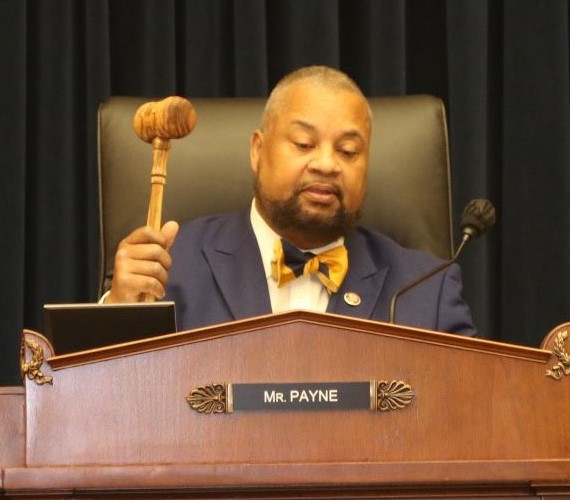
NEWARK - Never the most vociferous, demagogic or attention-seeking congressperson, U.S. Rep. Donald Payne, Jr. (D-10) of Newark at this moment finds himself in a critical position, both on the infrastructure and transportation policy front, and in the context of 2021 congressional redistricting; as Democrats try to maintain the priorities of President Joe Biden in the face of duel threats: anarchistic impulses rending the Republican Party that resulted in the Jan. 6th desecration of the United States Capitol, and fractures within its own ranks.
Payne's family, personal and political history spans a key part of the political arc in question. The late
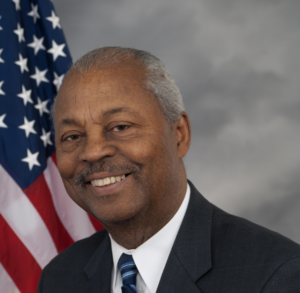
U.S. Rep. Donald Payne, Sr. voted against the Iraq War because he wanted investments in his beleaguered home city instead of enabling regime change mobilization in the Middle East against weapons of mass destruction that didn't exist. He also voted against the Wall Street bail out package, citing its heavy focus on Main Street instead of the Newark back streets.
Given his history of bucking bills that didn't benefit his constituents, Congressman Payne might have appreciated the fact that his son - who succeeded him in the United States House of Representatives in 2012, the year the elder Payne died - this year recorded a vote in favor of President Biden's signature bipartisan infrastructure deal.
“The new, $1.2 trillion Infrastructure Investment and Jobs Act is going to create opportunities for minority and women-owned businesses nationwide," said Payne, Jr., who earlier this year assumed the chairmanship of the Subcommittee on Railroads, Pipelines, and Hazardous Materials for the House Committee on Transportation and Infrastructure. "We must not let discrimination in federal contracting deny them their right to participate in these infrastructure projects. As Chairman of the Rail Subcommittee, I will continue to work to make the process of how we award federal passenger rail projects more equitable and transparent for all American businesses."
The bill also makes critical investments in rail projects, among them the long-delayed access corridor to the region's core, or the Gateway Tunnel, in a district where only two towns - Irvington and Hillside lack train stations.
"U.S. passenger rail lags behind the rest of the world in reliability, speed, and coverage. China already has 22,000 miles of high-speed rail, and is planning to double that by 2035. The legislation positions rail to play a central role in our transportation and economic future, investing $66 billion in additional rail funding to eliminate the Amtrak maintenance backlog, modernize the Northeast Corridor, and bring world-class rail service to areas outside the northeast and mid-Atlantic. This is the largest investment in passenger rail since Amtrak’s creation, 50 years ago and will create safe, efficient, and climate-friendly alternatives for moving people and freight."
The bill, notes Payne, improves the nation’s infrastructure in several ways, such as:
- $66 billion in guaranteed funding for rail projects.
- $38 billion in funding that could be used for the Hudson River Tunnel project (above and beyond its estimated $12 billion price tag).
- $12 billion for rail upgrades, such as high-speed rail projects.
- $46 billion for flood mitigation, coastal resiliency and other measures to protect infrastructure from extreme weather events.
- $55 billion for water infrastructure and the removal of lead-contaminated pipes in drinking water systems.
Long delayed amid pushing and shoving from within the Democrats' own ranks, the deal for Biden's infrastructure agenda finally came together after the November 2021 general election, and after a much-criticized - but historically significant - U.S. withdrawal from Afghanistan and a 20-year occupation going back to a presidential agenda the late Congressman Payne, Sr. vehemently opposed.
Payne, Jr. - who celebrated his birthday yesterday - knows the political arc his father lived through and died trying to redirect to critical domestic spending, which is why he takes a certain pride in having put himself in a position to be the chairman of the rail subcommittee at the beginning of this year, and why - whenever he saw Department of Transportation Secretary Pete Buttigieg in the lead-up to the infrastructure deal - Buttigieg stopped him before he could say anything and said, "I know, I know, the Gateway Tunnel."
"I'm in the catbird's seat," the congressman told InsiderNJ.
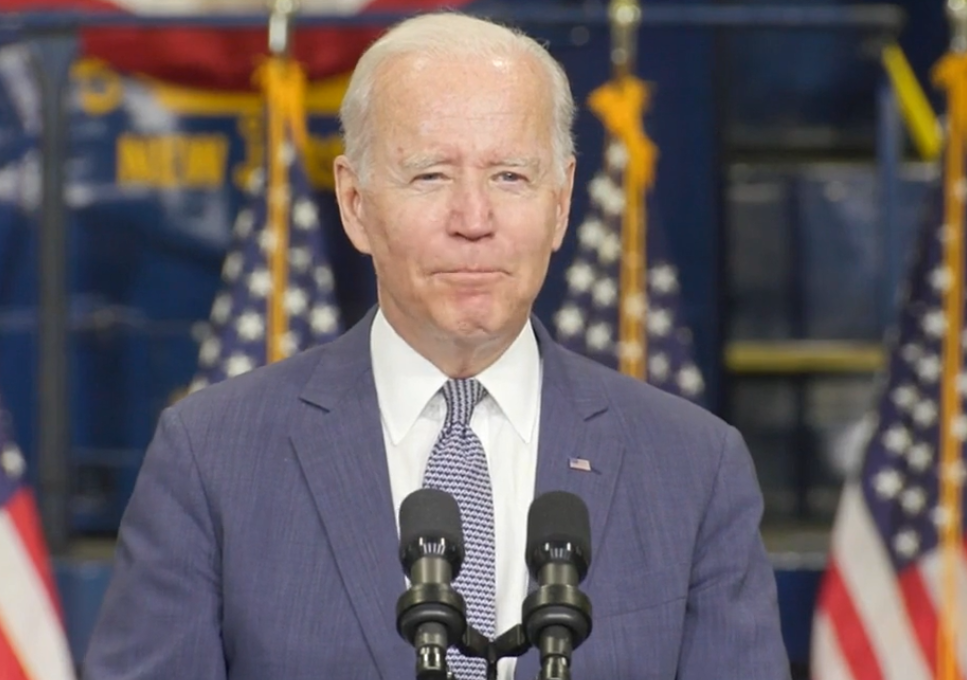
Standing at the edge of Newark, in Kearny on Oct. 25th, amid the shambles of an outmoded transportation infrastructure core in the environs of an old factory town turned upside down in the late last century, at his own crucial political intersection now, Biden - who during his long career as a United States senator commuted via Amtrak from his home in Delaware to D.C. - made a national-sized case for his rail-priority agenda.
In his remarks from the stage eight days ahead of the general election here, when his Democratic Party ally Governor Phil Murphy went before the voters amid jittery optics out of Washington, D.C. where Democrats occupy a majority but can’t come to an agreement, Biden asserted the weight of his office in a speech about building America again “from the bottom out,” in his words.
“I’m tired of trickle down,” said the President.
That’s why he proposed two critical pieces of legislation, he noted, including a framework of $2 trillion or less “that will allow the House of Representatives to move forward next week on a $1 trillion bipartisan infrastructure bill and set the stage for passage of Biden’s larger ‘Build Back Better’ package.”
“These bills are about competitiveness versus complacency,” said Biden, who as a United States Senator from Delaware famously commuted to and from Washington, D.C. aboard Amtrak. The infrastructure bill is about rebuilding the arteries of America, he said. The Portal Bridge is a choke point, a bottle neck, said President, citing the usually massively neglected New Jersey – and specifically the (Democratic Party-voter rich) snarl of Hudson and Essex counties- as a touchstone to his national priorities.
Murphy won, and Biden got the infrastructure bill passed, and the support of the U.S. House for the progressive $1.7 trillion Build Back Better bill. Now, though, the U.S. Senate has stalled ahead of Senate Majority Leader Chuck Schumer's goal of getting Build Back Better done in his chamber ahead of Christmas.
"Leaving for the holidays officially punts both President Biden’s climate and social spending legislation and voting rights legislation, which would require a change in the Senate rules, into next year.
"Democrats haven’t said when they could pick back up either, though the White House has indicated that Biden wants to see the spending bill move in January, and senators view the formal start of the 2022 election cycle as an informal deadline for passing voting rights legislation."
U.S. senators Joe Manchin (D-W.Va.) and Krysten Sinema (D-Ariz.) don't back the bill, frustrating their fellow Democrats, U.S. Rep. Mikie Sherrill (D-11) and Payne among them.

"The House last week passed sweeping legislation known as Build Back Better that raises the $10,000 deduction cap on state and local taxes to $80,000, thereby giving relief to many middle-class families in New Jersey who pay more than $10,000 in property taxes alone. This has been a goal of New Jersey Democrats – and even many Republicans – since the cap was created in 2017. But the game is far from over. The Senate has to pass the bill and Bernie Sanders says he thinks raising the cap would be too beneficial to the rich. In a 50-50 Senate, Democrats can’t lose even one vote."
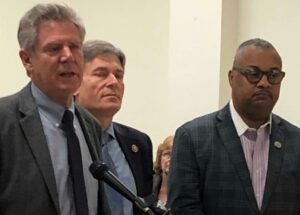
Payne decried the senate's inaction. "Two of our own senators are standing in the way," said the Newark-based Congressman. "It's unfortunate that we're in our own way. It's really a problem. We're in the majority. We have the House, the Senate, and the presidency and two senators are being obstructionist."
Payne continues to focus on what he cites as the good done to this point, but he's aware of those ominous signs heading into next year's midterm elections.
"This is groundbreaking legislation we have created, a once in a generation opportunity to improve infrastructure," he said, in reference to the first piece of the Biden agenda. As they dicker and debate the Build Back Better bill, Payne said he and his colleagues must prepare an attack strategy heading into the 2022 election cycle, which at the very least, emphasizes the good attained on the infrastructure front. "To date, we have not done a good job messaging in front of different groups. We have to remind people that we have been

there during the pandemic. We're doing everything we can to help the economy. We have undertaken 100% lead service line replacement, and I want to commend the [Newark] Mayor [Ras Baraka] and [Essex County Executive] Joe DiVincenzo for all coming together to solve a [$55 billion issue] issue that was plaguing New Jersey - a ten-year job accomplished in three years. Newark has been the model in repairing these lead water lines.
"When it comes to working to restoring the SALT tax deduction, my colleagues Congresswoman Mikie Sherrill and Congressman Bill Pascrell have been incredible."

Heading into an election season that will test the myriad political forces pulling the country in different directions, Payne faces a 2022 rival for the 10th Congressional District seat from his own party, former Working Families Legislative Director and Regional Coordinator Imani Oakley, an anti-machine Democrat who promises more proactive progressive leadership for the district. The primary challenge has motivated Payne to make a case for himself and his work in his Newark-based district. At the same time, he is pragmatically aware of the larger dimensions of the Democratic Party's challenge to hold onto its ever-so-slender 221-213 majority in the U.S. House of Representatives.
Against the backdrop of the 2021 redistricting process, on track to be resolved next week, Payne occupies

a critical position as the representative of the most Democratic Party-dominant district in New Jersey, which abuts two key congressional battlegrounds, one served by Sherrill, and the other served by U.S. Rep. Tom Malinowski (D-7). At present, the northern range of Payne's district includes part of Montclair, an overwhelmingly Democratic town in Essex County. Sherrill occupies a smaller portion of the same town. To southward, Malinowski depends on Democratic Party-rich Millburn, which he doesn't want to part with as he considers a rematch with state Senator Tom Kean, Jr. (R-21). Malinowski barely won his 20220 reelection bid, and that was in a better political climate, with New Jersey Democrats eager to punish incumbent President Donald J. Trump. Now, Malinowski and Sherrill face reelection with Republicans reanimated by Democrats' missteps, their energy on display in the 2021 general election, which GOP gubernatorial challenger Jack Ciattarelli lost to incumbent Democrat Murphy by just three percentage points.
Heading into redistricting, insiders talked about the possibility of augmenting Sherrill's 11th District by removing Millburn from Malinowski's 7th, essentially conceding the 7th. But as time ticks down on the process, and Democrats at the federal level in particular continue to press for the protection of their party's incumbents, the eyes of the insiders have turned more keenly toward Montclair. If Democrats can secure more of Montclair for Sherrill, they won't have to mangle Millburn, an outcome beneficial to both general election battleground occupants Sherrill and Malinowski. The machination would require Payne to sacrifice some of Montclair, which, in the overall scheme of tings, would not arguably interfere with the Democratic character of his district.
Oakley - who lives in Montclair - panned the potential map as the nullification of local Black political power. "Montclair — currently split between the 10th and 11th Congressional districts — is at the center of a redistricting political power play," wrote the challenger. "To increase their influence, some local powerbrokers have proposed moving the historically Black South End and 4th Ward of Montclair out of the majority Black 10th and into the majority white 11th. This proposal would take Black and Brown voters in this neighborhood from a voting majority to a single-digit voting minority in the 11th."
Sensitive to the delicate balance of the process and what it may eventually mean in the larger political context of the times, Payne addressed the situation. "I am amenable to helping both of my colleagues," said the congressman, referring to Sherrill and Malinowski. "I love the district as its constituted now and would like nothing more than to see it remain the same." That said, "I could concede a bit more to Mikie Sherrill; possibly I have enough of Montclair to concede a portion." Only on one condition, however, "As long as I retain the 4th Ward," Payne said.
Local and county representatives in Montclair confirm that Payne could technically hold onto the 4th Ward while giving more of Montclair to Sherrill - who, in fact lives in Montclair but not in the portion of the town currently in her congressional district.

Mayor Sean Spiller lives in the 3rd Ward, for example, and Payne is his congressman.
"From our perspective, our goal is to turn out the vote," said the mayor, looking ahead to next year. "However they come with it [the new map], we will work hard. I think we want to make sure we're well represented and that the map they come up with is fair. We've got two great congress people now."
Essex County Commissioner Brendan Gill, who chairs his town's Democratic Committee, said of the 35 districts in Montclair, ten fall within Sherrill's 11th Congressional District (nine in the First and one or two in the Second). The rest of the 2nd, the 3rd and the 4th are in Payne's 10th Congressional District. The 4th Ward historically represents an African American concentration of votes. As the town has become more integrated, a larger percentage of African American voters have dispersed throughout the entire city. Montclair has had two congressional representatives for 30 years. In the last iteration, the 8th Congressional District (then occupied by Pascrell) split essentially the first, 2nd and some of the third 3rd, with the 4th solidly in Payne's 10th District. Gill concedes that there is potential, when looking at redistricting, to maintain that concentration of the 4th in Payne's district, while enhancing Sherill's Democratic base with the 2nd and third 3rd.
"Montclair benefits by having the representation of two congress people," said the Essex County

Commissioner. "I would hope that the map protects communities that have been underrepresented in this process. In addition, I would want to balance that in a way that allows the overwhelming Democratic vote that comes from Montclair - the second largest Democratic producing town in the Essex County stronghold [after Newark] - to create the most advantageous opportunity to have Democratic representation at the federal level. I'm hoping the experts draw a map that achieves that balance."
A failure by Democrats to attain such balance could conceivably mean the difference between having Democrat Nancy Pelosi and Republican Kevin McCarthy at the head of the U.S. House of Representatives. Just a few sort weeks after a Trump-motivated mob stormed the United States Capitol to try to short-circuit Vice President Mike Pence from certifying the 2020 presidential election, Trump met with McCarthy at his Mar-a-Lago resort in South Florida. According to The Associated Press, "the two men discussed many topics, starting with how Republicans can win the seven seats needed in next year’s midterm elections to retake the House, according to an account of the meeting provided by the Save America PAC."
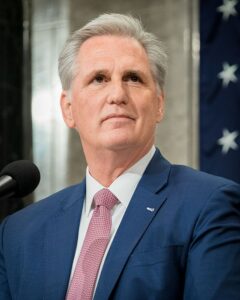
CNN reported earlier this year that House Minority Leader McCarthy - invited to Kean's 7th Congressional District Campaign kickoff as a "special guest" - gave up on the notion of boycotting the select investigative committee created by House Speaker Pelosi: Instead, he plans to recommend some GOP members for the panel. But the idea isn’t to help get to the bottom of what happened during the attack on Jan. 6 — it’s to create a “counternarrative” so that Republicans don’t get all the blame for a problem created and inflamed by President Trump, and enabled by GOP stalwarts like McCarthy himself.
Democrats, of course, will highlight those connections, especially in those battlegrounds occupied by the likes of Sherrill and Malinowski.
Four years ago, a bow-tied Payne, Jr. stood amid the sharp-elbowed swarm of commuters in Newark Penn Station as he considered where Democrats would have an opportunity to pick up House seats in 2018.
Safely cocooned from the GOP in a plus 36-Democratic District, according to the Cook Report, Payne instinctively spoke to the political safety of his colleague, U.S. Rep. Josh Gottheimer (D-5), who snatched his seat away from a Republican incumbent in 2016 and presumably would need every piece of party instrumentation at his disposal to defend in the coming federal campaign year.
The priority for Democrats, said Payne, would have to be Gottheimer.
“We’ll see what happens and where they decide to go but I’m just working on securing Josh Gottheimer’s [CD5] seat. I told the DCCC, ‘let’s hold onto what we have to make sure that’s secure, and then move forward,’ said the Newark Congressman. “We’ll see what 2018 has in store. There could be great opportunities in the mid-term.”
Since then, Democrats picked up seats in the 7th and the 11th, and now Payne's district, the 10th, potentially contains the key to protecting both of them.
Twenty years ago, Payne's father voted against authorizing then-President George W. Bush from using force in Iraq, one vote in a minority that could not prevent a war; and now, Payne Jr. occupies a critical forward position of the domestic infrastructure agenda that Biden craves, in part to reverse the President's own role as a senator in enabling Bush's foreign policy agenda. At the same time, the younger Payne - alert to his own primary challenge - stands at the torque point of his party's priority to hold onto a Washington, D.C. majority, warring with itself much of the time, but ultimately in the congressman's view, essential to a wiser use of American power, especially domestically and particularly given the threat - maybe even graver and more insidious than that confronted by his father - emanating from the other side.






